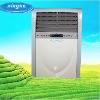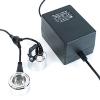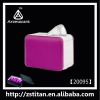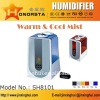Evaporative coolers work best if the interior of the building is not well sealed. Because the cooled air is being blown into the home, a window or door left slightly open creates a pressure front, resulting in a more forcible circulation of the cooled air. The "faster" the air moves, the cooler if feels against the skin.
Evaporative coolers are more effective in regions with high temperatures but low levels of humidity, such as the Middle East and the southwestern United States. Evaporative coolers are essentially pushing wet air into the building, creating higher levels of humidity. But if the humidity is already high, and the air is already "wet," the evaporative process is slowed. The air blown into the building isn't as cool; it increases the already high levels of humidity.
If the outside temperature is 100 degrees, for example, with a relative humidity of 10%, an evaporative cooler would lower the inside temperature to 73 degrees. If the humidity were 50%, the cooler would only lower the temperature to 88 degrees.












